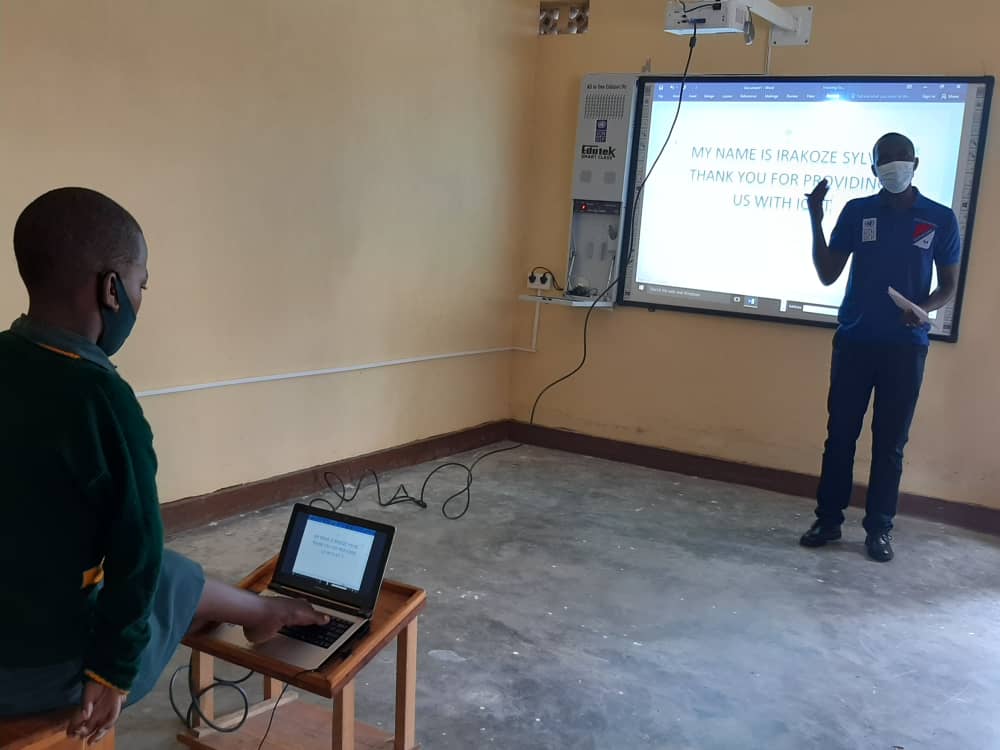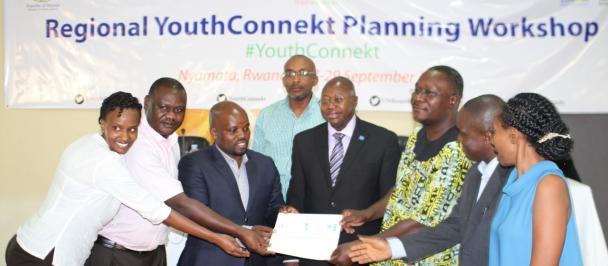Sylvie Irakoze, a Primary five pupil born with a disability was forced to put her studies on hold when challenges became too much for her to bear.
In Rwanda, inadequate infrastructure, lack of adapted equipment, inadequate learning materials, lack of enough science laboratories, and inadequate number of skilled teachers are some of the challenges still facing learners with disability.
Sylvie Irakoze, a Primary five pupil born with a disability was forced to put her studies on hold when challenges became too much for her to bear.
In class, she had relied on her feet to write but this was too hard for her and prevented her from doing most of her class work with ease. She also found it hard to catch up with others.
However, her story is changing thanks to a modern learning technology initiative that was introduced at her school- GS HVP Gatagara-Nyanza District. The initiative has brought 11 “smart boards” to three HVP Gatagara schools based in Huye, Rwamagana and Kicukiro districts. These schools serve a total of 1,366 students, including 494 students with disabilities.
The smart learning technology was launched on 5th May alongside the physiotherapy program to facilitate access to health services and access to quality education for persons with disabilities. It is funded by the United Nations Development Programme (UNDP) Rwanda, in partnership with the United Nations (UN) and Liquid Telecom.
According to organizers, the internet broadband provided by Liquid Telecom is expected to transform the learning experience for the students, making it easier and more friendly, and also widen their learning spectrum.
This event came as a part of the commitments made during the official launch of a joint Disability Inclusion Initiative between the UN and development partners in November 2020. The project also advocates for persons with disabilities (PWDs) and aims to attract other stakeholders to support health services and innovative education of PWDs.
The UNDP Resident Representative Maxwell Gomera said that UNDP in Rwanda and partners want to support women, men and children who are physically limited to overcome their challenges and regain abilities to live to their full potentials and achieve their dreams.
“Children with special needs can benefit enormously from modern, adapted learning tools. Now smart boards and the Internet are giving access to visual and sound content that can meet the needs of students who may have limited vision or be hard of hearing, while also initiating them to the use of the Internet and new technologies,” he added.
Dr. Nelson Mbarushimana, Director General at Rwanda Education Board (REB), said they are working to ensure that infrastructure, including classrooms, provide students with a conducive learning environment.
“We have a new unit for inclusive and special needs that caters for students with disabilities. The unit is going to be strengthened. Also, our curriculum and teaching methods will be improved through the work of specialised personnel who are committed to make a difference for learners with disabilities.”
Irakoze is excited about the possibilities ahead: “The smart learning technology and equipment brought to us will help me and others learn and respond faster and more efficiently,” she said. “It used to take me very long just to type my name using my toe, which discouraged me from working on school assignments. I however never wanted to give up. This is a dream come true!” she said.
Rwanda is one of the signatories of the United Nations Convention on the Rights of Persons with Disabilities (UNCRPD). Its seven-year National Strategy for Transformation (NST1 2018-2024) has been designed to address several issues that disabled citizens face in day-to-day life.
According to the latest census (2012 RPHC), Rwanda counts 446,453 persons with disability (50.4% are women). The census used the concept of activity limitations to identify persons with disabilities.
Approximately 20% (87,900) of the school-age population (children between the ages of 5 and 18) live with disabilities.
The census reported a higher poverty incidence among households headed by a person with a disability (50%) than among households headed by a person without a disability (44%), indicating that poverty remains a major challenge faced by persons with disabilities. Stigma and discrimination in society are other significant barriers.

 Locations
Locations



